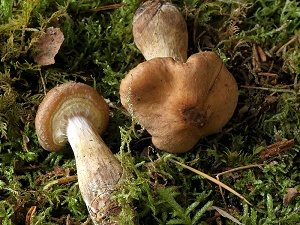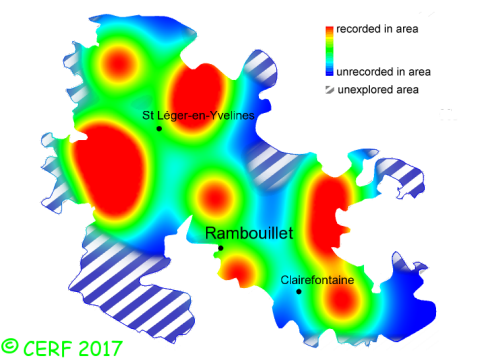| Armillaria gallica Marxm. & Romagn. |
|
|
|
|
|
|
The cap is reddish brown, conical then slightly flattened; its margin is inrolled, slightly striate. The cap surface is scaly, not viscid nor sticky. The stem is short, bulbous, with a short-lived ring. The flesh is white, unchanging; its taste is mild; the odour is faint, more or less unpleasant; its texture is fibrous. The gills are adnate, crowded . The spore print is white. This species is more often saprophytic than parasitic. It grows on wood (dead or not). The fruiting period takes place from June to December.
Distinctive features : stem with yellow ring; bell-shaped cap with inrolled margin and fine scales of same colour as cap; isolated (not in dense tufts) bulbous stem; on buried wood Armillaria gallica is quite rare and scattered in the forest of Rambouillet, and is occasional, more generally speaking . | ||
|
page updated on 14/01/18

